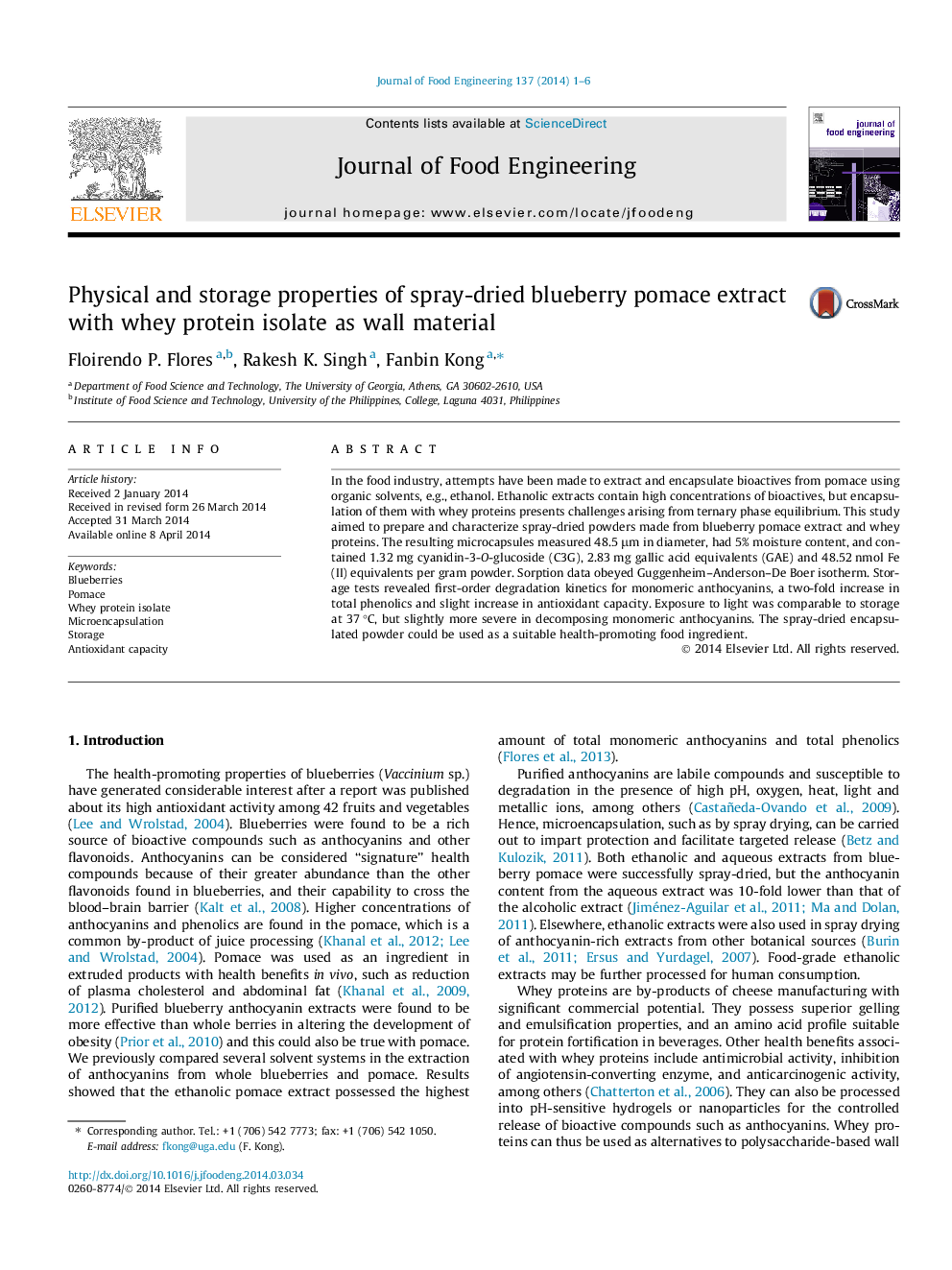| Article ID | Journal | Published Year | Pages | File Type |
|---|---|---|---|---|
| 223117 | Journal of Food Engineering | 2014 | 6 Pages |
•Anthocyanin loss of powder obeyed first-order kinetics.•Phenolics content and antioxidant activity increased on storage.•Photodegradation effect was comparable to storage at 37 °C.•Sorption data was modeled using GAB equation.
In the food industry, attempts have been made to extract and encapsulate bioactives from pomace using organic solvents, e.g., ethanol. Ethanolic extracts contain high concentrations of bioactives, but encapsulation of them with whey proteins presents challenges arising from ternary phase equilibrium. This study aimed to prepare and characterize spray-dried powders made from blueberry pomace extract and whey proteins. The resulting microcapsules measured 48.5 μm in diameter, had 5% moisture content, and contained 1.32 mg cyanidin-3-O-glucoside (C3G), 2.83 mg gallic acid equivalents (GAE) and 48.52 nmol Fe (II) equivalents per gram powder. Sorption data obeyed Guggenheim–Anderson–De Boer isotherm. Storage tests revealed first-order degradation kinetics for monomeric anthocyanins, a two-fold increase in total phenolics and slight increase in antioxidant capacity. Exposure to light was comparable to storage at 37 °C, but slightly more severe in decomposing monomeric anthocyanins. The spray-dried encapsulated powder could be used as a suitable health-promoting food ingredient.
